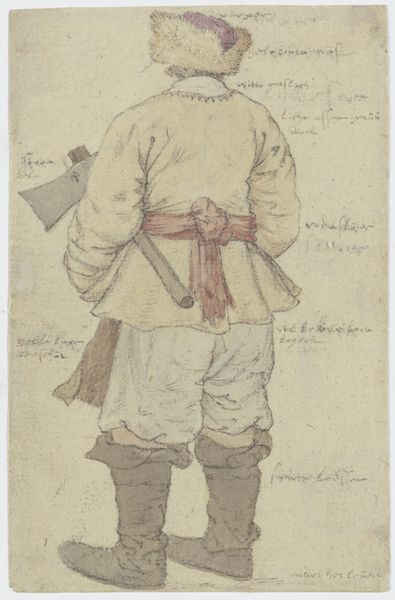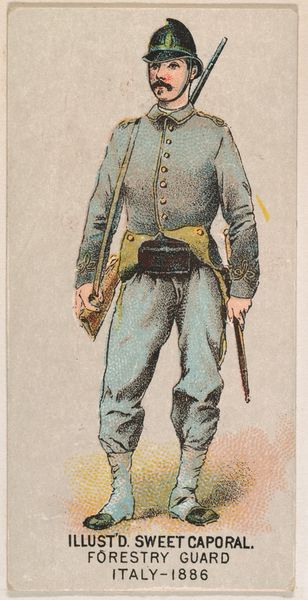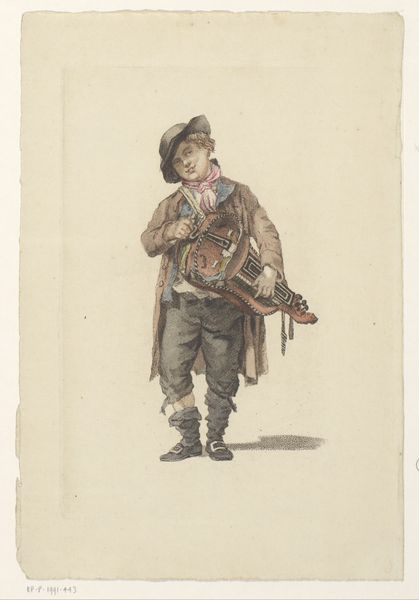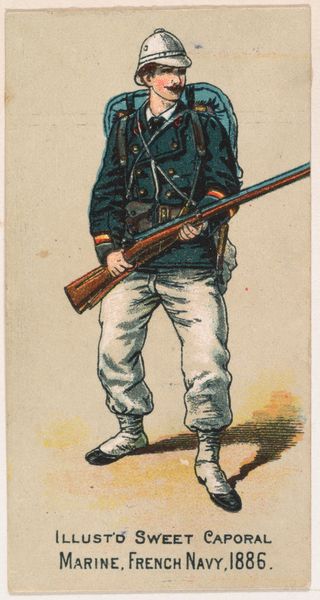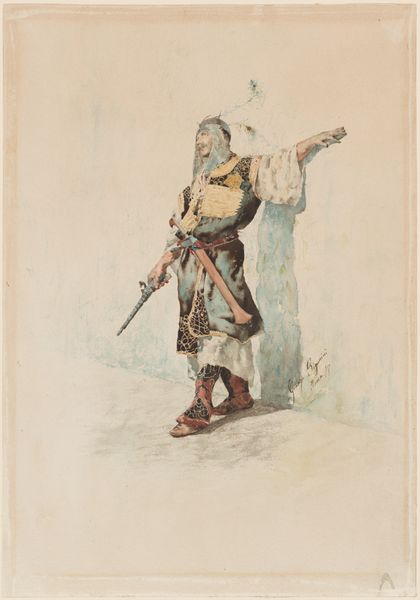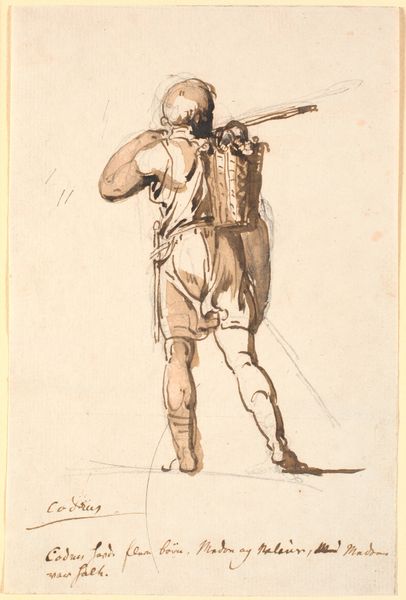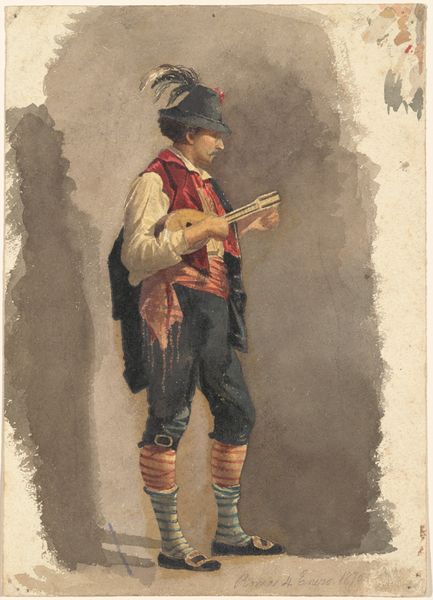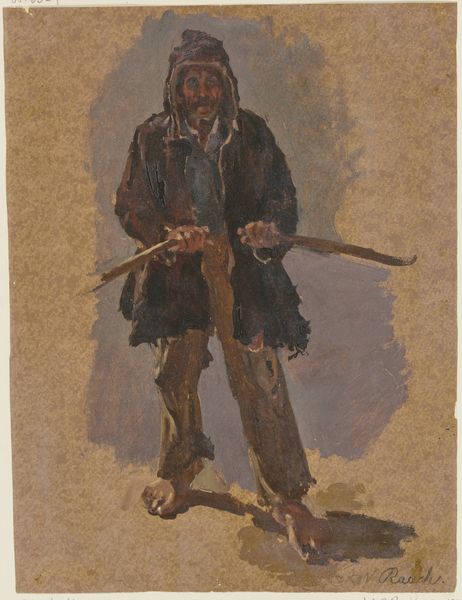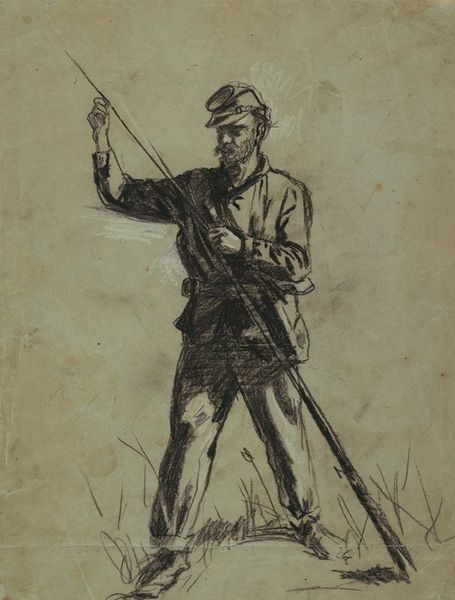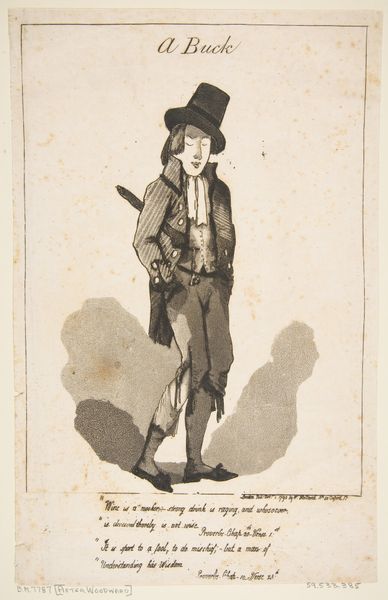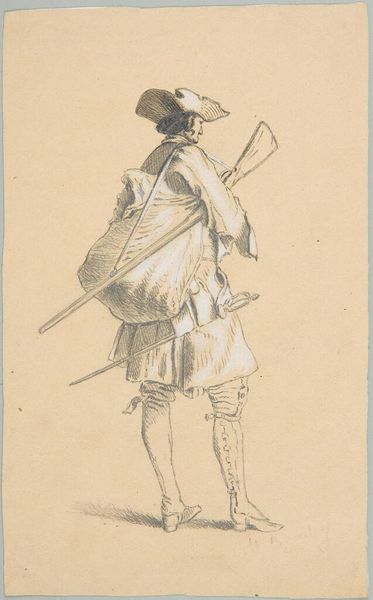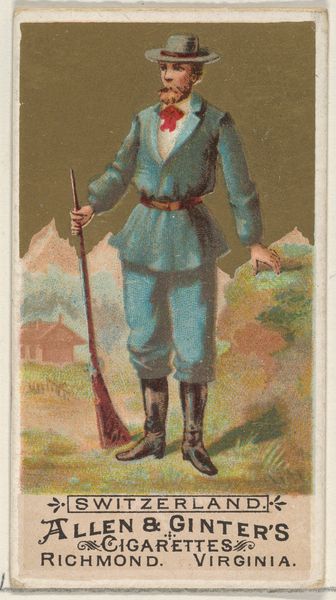
drawing, painting, oil-paint, oil
#
portrait
#
drawing
#
painting
#
oil-paint
#
oil
#
coloured pencil
#
romanticism
#
genre-painting
#
realism
Copyright: Public Domain
Curator: Let's discuss Johann Nepomuk Rauch's "Russian Peasant at Work", an oil-on-paper artwork created in 1837 and now residing at the Städel Museum. At first glance, the visible brushwork and limited color palette impart a humble, straightforward sensibility to this work. What do you see? Editor: Immediately, I am struck by the contrast in the figure’s stance versus his clothing. There's a certain dignity in the way he carries himself, despite being clearly a peasant, even a serf. Curator: Indeed. During this period, genre paintings often served a dual purpose: portraying everyday life while simultaneously reinforcing social hierarchies. Here, the peasant’s attire, particularly his simple tunic, denotes his social standing. This type of imagery played into existing social scripts and expectations, normalizing them within the art world and beyond. Editor: Absolutely. The top hat seems out of place at first, yet it signals to the increasing presence of capitalism even in agrarian communities and the subtle but undeniable disruption to a historical sense of rural tranquility. How would this piece be viewed and valued differently if painted by someone within the peasant class versus Rauch, who was formally trained? Curator: That's a crucial consideration. Rauch’s perspective as an outsider inherently shapes the representation. Was he commissioned to present a picturesque view of rural life, or did he approach the subject with a degree of empathy or social critique? The role of patronage, for instance, profoundly influenced the artist's creative latitude. Editor: The ambiguity intrigues me. There isn't overt suffering depicted here, no calls for change explicitly communicated through artistic symbolism. The very act of memorializing this peasant elevates his status, subtly disrupting the social narrative even as it seemingly conforms to it. We see his simple clothes but there is also the artist gaze which is a sort of exploitation. Curator: Agreed. The act of representation itself introduces a layer of complexity and it demands we examine not only what is presented, but who is doing the presenting. Rauch's approach mirrors a broader artistic trend—the Romantic era’s fascination with idealized images of rural people, and what they embodied. Editor: Right. The painting invites reflection not only on its formal artistic merit, but also on the cultural and socioeconomic framework that influenced both its creation and its current reception. By examining who holds power in representing specific people in artworks and for what end, we begin to disrupt traditional notions and forge fresh means of engagement and comprehension. Curator: Very well said. Considering these points, "Russian Peasant at Work" opens dialogues far beyond its immediate aesthetic appeal, engaging us with persistent and ever-evolving questions concerning representation, authority, and societal narratives.
Comments
No comments
Be the first to comment and join the conversation on the ultimate creative platform.

